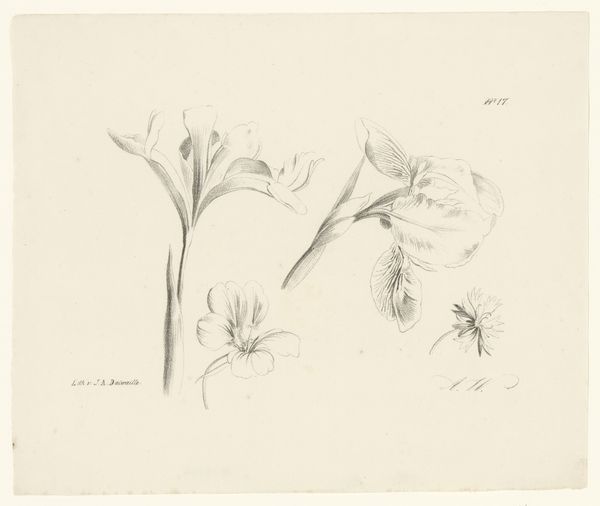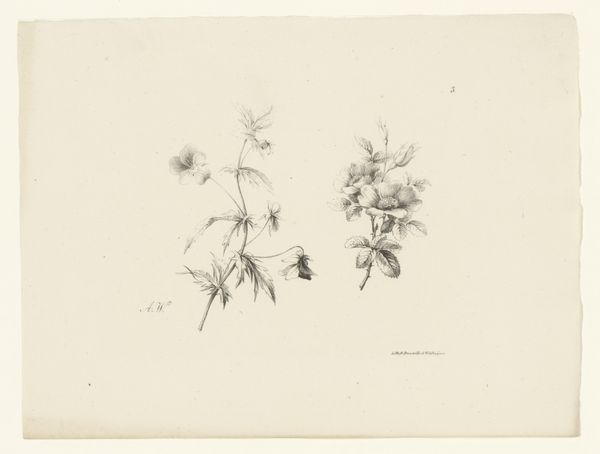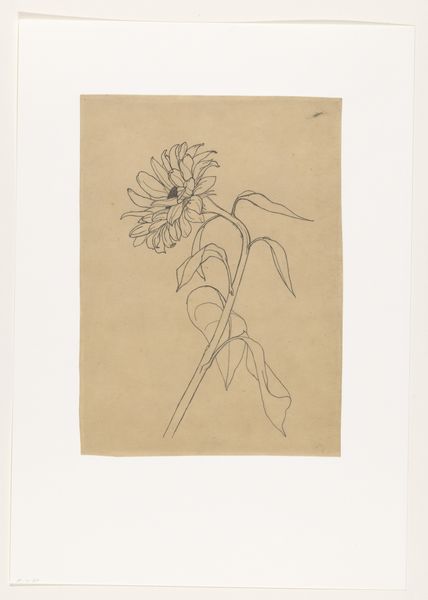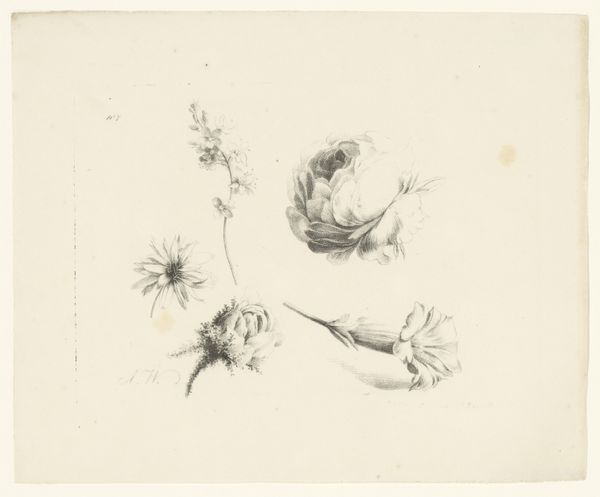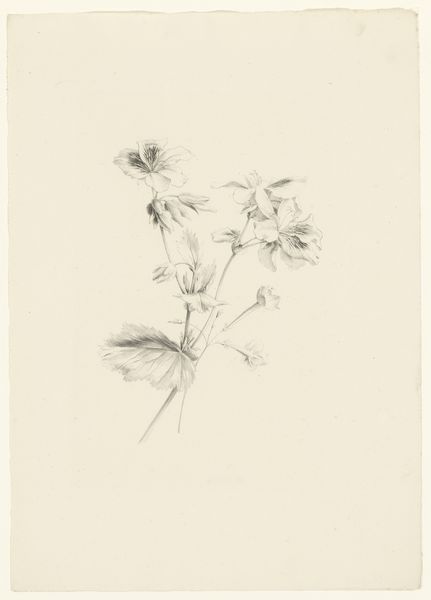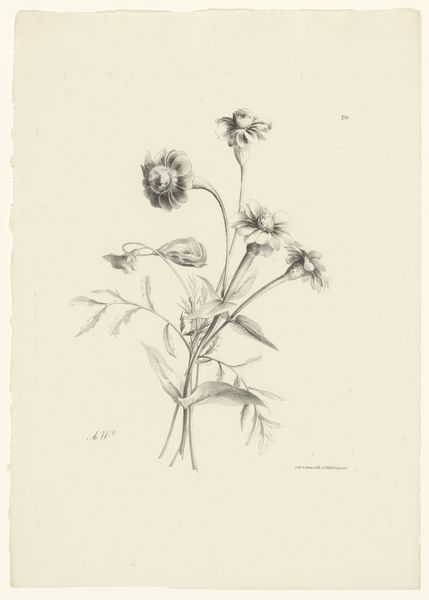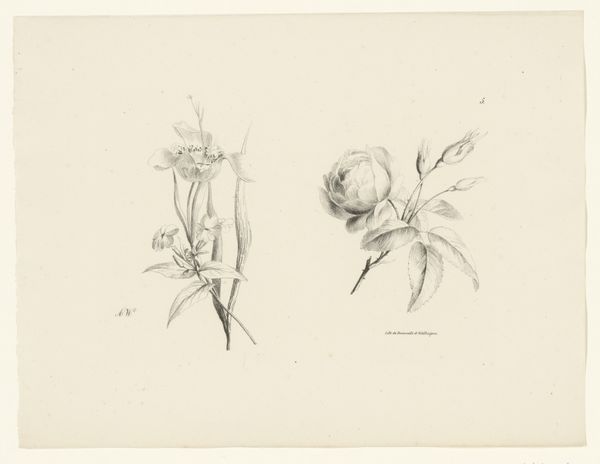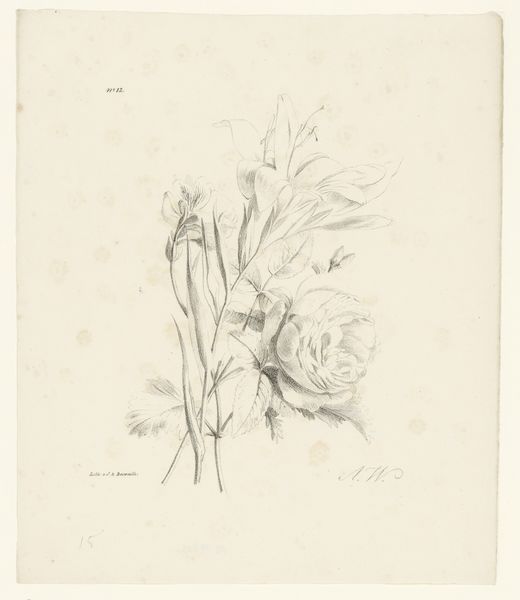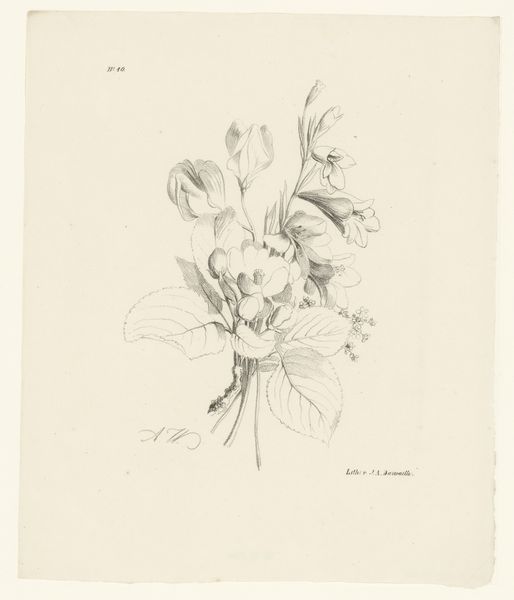
drawing, pencil
#
drawing
#
etching
#
pencil
#
botanical drawing
#
realism
Dimensions: height 210 mm, width 255 mm
Copyright: Rijks Museum: Open Domain
Curator: Welcome to the Rijksmuseum. Today, we're pausing before "Twee bloemen"—"Two Flowers"—a drawing crafted between 1820 and 1833 by Anton Weiss, rendered in pencil and etching. What springs to mind? Editor: Muted grace. Like pressed flowers in a cherished journal, fragile and preserved. The light feels almost...reluctant. Curator: Indeed, Weiss seems captivated by realism in this piece, offering us what I find to be an intensely observant study of botanical form. Considering the era, realism was becoming such a subject! Do you consider that these flowers could represent something beyond mere representation? Editor: Everything exceeds mere representation! What kind of paper is it on, you reckon? It's seen better days – a bit discoloured, evidence of time doing its work. Paper was precious then; artists wouldn't have wasted any of it, even for studies. The very choice of paper reveals how highly he might value botanical illustrations for his potential future large projects! Curator: Fascinating point, about the intrinsic value shaping artistic practice. But beyond the practical, look at how each delicate vein of the leaf, how carefully it has been brought to life with lines etched so perfectly. Don't you see how that devotion elevates the mundane to the marvelous? I sense he wishes we would look beyond mere craft. Editor: Of course, it also depends on whether this was commissioned. Botanical studies were becoming useful around then and perhaps these flowers could illustrate, and record specimens for future identification of medical uses. That sort of repetitive labor isn't glamorous, but it puts bread on the table and it also reveals how science impacts creativity. Also note the etching—etching suggests potential reproduction. To reach wider markets. To generate income beyond a single sale. Curator: But let's remember we can see through all these speculations how flowers were used in all sorts of imagery to send unspoken meanings... a gentle offering... maybe they represent lost innocence? Weiss’ touch carries an air of introspection, you feel? It’s more than mere visual accuracy he's getting at. Editor: I suppose... the etching lines forming the soft petals, but what kind of labor was that, you see. Hours spent bent over a plate, acid fumes... a repetitive strain on hands and eyes... Curator: Your emphasis truly opens my eyes to labor, both visible and concealed! Editor: Precisely. It reminds us art exists because materials and people are there, doing that craft! Curator: I like thinking on this labor in comparison with our thoughts. In this convergence, we both arrive, seeing those simple flowers in a profoundly fuller light.
Comments
No comments
Be the first to comment and join the conversation on the ultimate creative platform.
